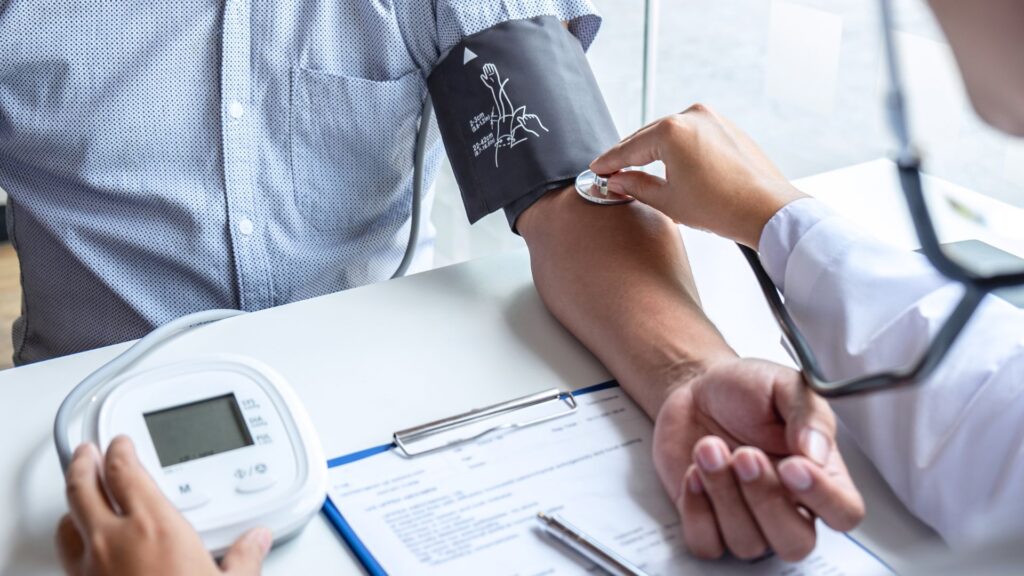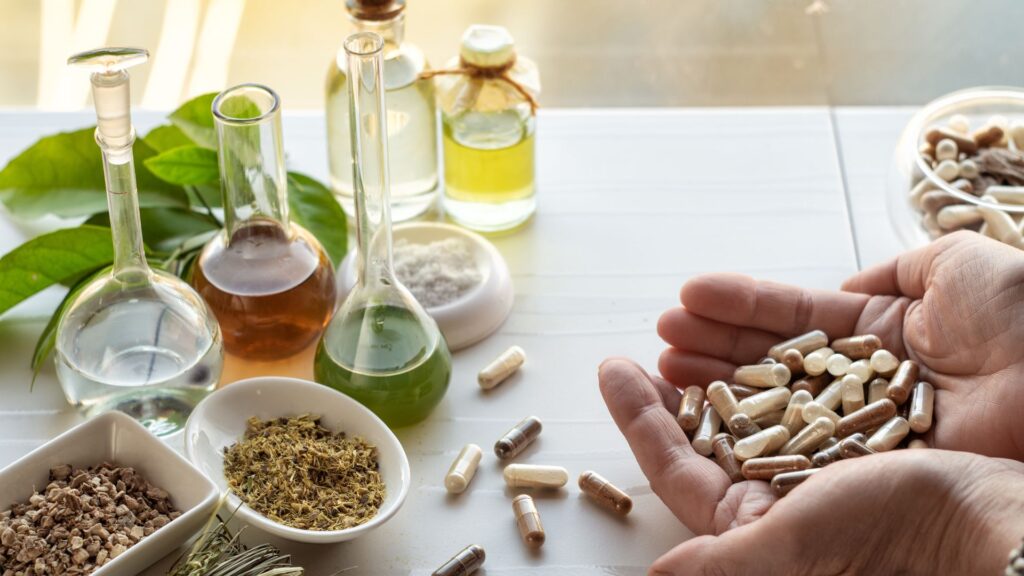
High blood pressure, also known as hypertension, happens when the force of blood against the walls of your arteries is consistently too high. Think of your arteries like the pipes in your house; when the pressure inside them is too strong, it can cause damage over time. High blood pressure often does not have obvious symptoms, but it can lead to serious health problems like heart disease, stroke, and kidney issues if left untreated.
Keeping a healthy lifestyle, including eating well, staying active, and managing stress, can help keep blood pressure in check. Sometimes, medication might be needed too. It is important to monitor your blood pressure regularly, especially as you get older, to catch any issues early and prevent complications.
Ayurveda, the ancient system of medicine from India, offers holistic approaches to managing high blood pressure. High blood pressure or Hypertension is also known as Raktagata Vata in Ayurveda. In Ayurveda, hypertension is understood as an imbalance in the body’s doshas, primarily vata and pitta.
According to Ayurvedic principles, factors such as improper diet, stress, lack of exercise, and genetic predisposition can aggravate these doshas, leading to elevated blood pressure. Ayurvedic remedies for high blood pressure often involve dietary and lifestyle modifications, herbal supplements, therapies, and stress-reducing practices.
Ayurveda may play a role in addressing hypertension:
- Dietary Recommendations: Ayurveda, managing high blood pressure involves adopting a dietary approach that focuses on balancing the doshas (energies) within the body, particularly Pitta and Vata, which are often associated with hypertension. A key aspect of the Ayurvedic diet for high blood pressure involves reducing the intake of foods that aggravate these doshas, such as salty, spicy, and oily foods. Instead, emphasis is placed on consuming fresh, whole foods that are nourishing and easy to digest.
This typically includes plenty of fresh fruits and vegetables, whole grains like quinoa, whole wheat, millet, and legumes, and lean proteins such as tofu, paneer, fish, and poultry. Additionally, incorporating cooling and calming foods and spices like cucumber, mint, coriander, and fennel can help pacify Pitta and promote a sense of balance. Ayurveda also advises against overeating and emphasizes mindful eating practices, such as chewing food thoroughly and eating in a calm, relaxed environment. By following these dietary guidelines, individuals with high blood pressure can support their overall health and well-being in alignment with Ayurvedic principles.

- Herbal Remedies: Ayurvedic herbs are often used in the management of hypertension. Some commonly recommended herbs include Arjuna (Terminalia arjuna): Arjuna is a well-known Ayurvedic herb used for various heart conditions, including high blood pressure. It is believed to help strengthen the heart muscles and improve circulation.
- Ashwagandha (Withania somnifera): Ashwagandha is an adaptogenic herb that may help reduce stress and anxiety, which are often contributing factors to high blood pressure.
- Brahmi (Bacopa monnieri): Brahmi is known for its calming effects on the mind and nervous system. It may help in reducing stress and promoting relaxation, thereby potentially lowering blood pressure.
- Guggulu (Commiphora wightii): Guggulu is commonly used in Ayurveda to lower cholesterol levels and support cardiovascular health, which can indirectly help in managing high blood pressure.
- Garlic (Allium sativum): Garlic has been used for centuries in Ayurveda for its cardiovascular benefits, including its potential to lower blood pressure. It may help in relaxing blood vessels and improve circulation.
- Tulsi (Ocimum sanctum): Also known as holy basil, Tulsi is revered in Ayurveda for its various health benefits. It may help reduce stress, inflammation, and high blood pressure.
- Triphala: Triphala is a combination of three fruits, Amalaki (Emblica officinalis), Bibhitaki (Terminalia bellirica), and Haritaki (Terminalia chebula). The antioxidant properties of these fruits are believed to support cardiovascular health.
- Mukta Vati: Mukta Vati is an Ayurvedic formulation specifically designed to help manage hypertension. It contains various herbs, including Shankhpushpi (Convolvulus pluricaulis), Brahmi, and Jatamansi (Nardostachys jatamansi).
- Sarpagandha (Rauwolfia serpentina): Sarpagandha is a potent herb used traditionally in Ayurveda for managing hypertension. It contains alkaloids that may help lower blood pressure by relaxing blood vessels.
- Lifestyle Modifications: Central to Ayurvedic principles is the concept of balance among the body, mind, and spirit. Ayurveda emphasizes dietary changes, stress reduction techniques, and physical activities. First and foremost, adopting a diet rich in fruits, vegetables, whole grains, and lean proteins while minimizing processed foods and excessive salt intake is crucial.
Ayurveda also recommends incorporating stress-relieving practices such as yoga, meditation, and deep breathing exercises into daily routines to calm the nervous system and reduce hypertension triggers. Additionally, regular physical activity, tailored to one’s constitution, helps improve circulation and overall cardiovascular health. By integrating these Ayurvedic lifestyle modifications, individuals can take proactive steps towards managing high blood pressure naturally and promoting holistic well-being.

- Detoxification Therapies: Detoxification therapies typically focus on eliminating processed foods, alcohol, caffeine, and other substances that can contribute to inflammation and oxidative stress, both of which are linked to hypertension.
Ayurvedic treatments like Panchakarma, which involves detoxifying the body through various therapies like massage, herbal steam treatments, and dietary modifications, may be recommended to address underlying imbalances contributing to hypertension. Virechana is a Panchakarma therapy step that involves controlled purgation to eliminate excess Pitta dosha from the body. Massage techniques, particularly
Abhyanga (warm oil massage), helps to relax the body, improve circulation, and reduce stress—a significant contributing factor to high blood pressure. Herbal steam therapy, known as Swedana, promotes detoxification through sweating, aiding in the elimination of toxins and excess fluids.
Nasya, which involves the administration of herbal oils into the nasal passages, can help clear congestion and improve respiratory function, indirectly benefiting blood pressure regulation. Basti, or therapeutic enemas, play a crucial role in Panchakarma by cleansing the colon and balancing the doshas.
One of the key principles of Ayurveda is that each individual is unique, and treatment should be tailored to their specific constitution (prakriti) and imbalances (vikriti). Ayurvedic practitioners may assess a person’s overall health, constitution, and specific imbalances before recommending a personalized treatment plan for managing hypertension.
